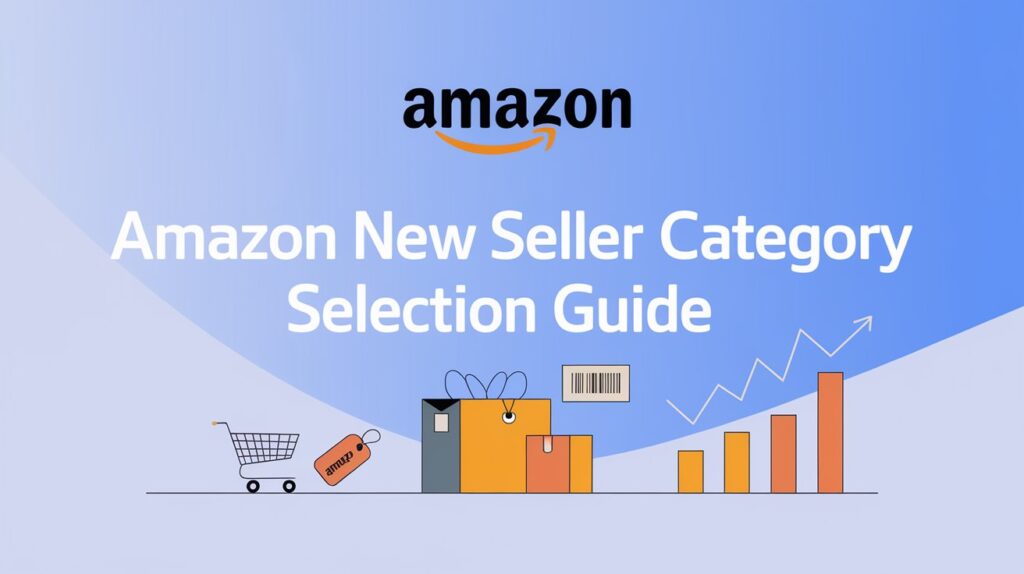Many new sellers fall into two extremes when it comes to product selection or other decisions: either blindly chasing after so-called “blue ocean categories” or designing products based solely on personal preferences. Both approaches are essentially like using hard-earned money to buy lottery tickets—what seems like entrepreneurship is actually a form of gambling.
Instead of telling you which specific categories to choose, it’s more practical to explain why you should pick those categories. Teaching someone how to fish is far more useful than just giving them the fish.
The truly sustainable business wisdom is like a safety net woven from data. Likewise, data analysis skills are one of the must-have abilities for every cross-border seller. The following four dimensions of data can help you establish a scientific decision-making framework:
1. Four Key Dimensions for Data-Driven Decisions
- Market Demand Detector
- Core Metric: BSR ranking fluctuation curve (can be captured using Amazon Data Pilot)
- Interpretation Focus: Look for categories with monthly sales ≥ 500 and BSR fluctuations < 20%. Stable markets like these are more suitable for new sellers.
- Competition Intensity Scanner
- Key Data: In the TOP 100 products:
- Products with fewer than 500 reviews account for ≥40%
- Products listed for less than a year account for ≥30%
- New Sellers account for ≥25%
- Category Explanation: Low dominance by veteran sellers means there’s room for new sellers to break through.
- Key Data: In the TOP 100 products:
- Profit Calculator
- Essential Formula: (Retail Price × 0.85 – First-Stage Freight – FBA Fees – Product Cost) / Retail Price ≥ 25%
- Pitfalls to Watch Out For: For volumetric-weight products, consider the dimensional weight. For lightweight items, pay attention to inbound configuration fees.
- Compliance Firewall
- Must-Check List:
- Category review requirements (can be collected from the Amazon Data Pilot)
- Recent category policy changes (monitored using the Brand Analysis module)
- Sensitive word filtering (tools to cross-check high-frequency negative review keywords)
- Must-Check List:
2. Understanding Where the Data Comes From Before Making Decisions
Many new sellers might want to look at data but don’t know where to find useful information. Traditional data collection methods often have three major challenges:
- High Technical Barrier: Writing web scrapers requires knowledge of Python, and using ready-made tools means learning complex configuration parameters. The anti-scraping measures alone can discourage 90% of people.
- High Time Cost: Manually compiling price, reviews, and listing time for 500 products in a category may take 2-3 days. By the time you finish gathering the data, the market might have already shifted.
- Risk of Data Distortion: Some third-party platforms have data delays of over seven days, so using such data for decision-making is like driving while looking in the rearview mirror.
Data Acquisition Solutions
Currently, there are three mainstream solutions in the industry, each with its advantages and disadvantages:
- Manual Collection Method (Suitable for budgets < 500 RMB)
- Advantages: No cost, directly record TOP 50 product data from the front-end
- Disadvantages: Only captures basic public information like ratings and prices, but can’t get real sales and traffic sources, and manual data entry is prone to mistakes.
- Typical Use Case: Temporarily verify the competitiveness of a specific subcategory.
- API Integration Method (Suitable for technical teams)
- Advantages: Real-time data can be fetched via Amazon MWS or SP-API, or third-party tools like Amazon Scrape API.
- Disadvantages: Requires handling API call frequency limits and has high maintenance costs. If you have a technical team, Amazon Scrape API might be a good fit as it handles most of the work once you send the request.
- Typical Use Case: Large sellers with an ERP system looking to enrich their data or data service providers needing frequent data collection.
- Tool-Assisted Method (Suitable for new sellers looking for a quick start)
- Core Value: Balances efficiency and cost. For example, Amazon Data Pilot, a visual data collection tool, allows you to generate structured reports containing BSR trends, rankings, and product details without needing technical knowledge.
- Execution Logic: Input keywords or URLs → Select data collection dimensions → Export to Excel. You can complete in 20 minutes what would otherwise require a programmer.
3. New Seller-Friendly Category Characteristics
Based on data we gathered from Q2 2024, categories with the following characteristics have a higher success rate:
- Price Sweet Spot: $15–35 (High conversion rate and low trial and error cost)
- Lightweight Products: Product weight < 1 lb (Controllable logistics costs)
- Stable Lifecycle: Steady daily search volume growth (Annual growth rate of 8%-15%)
- Innovation Potential: Over 30% of negative reviews point to product design flaws
Categories that fit these characteristics include: pet grooming tools, creative kitchen gadgets, smart home accessories, etc. However, real-time data verification is still necessary for specific selection.
4. Closing the Decision Loop: Data Should Be Translated into Actionable Insights
After collecting category data, use a SWOT matrix to match it with your resources:
- Does your supply chain cover 80% of material costs?
- Can your storage capacity support 150% of estimated sales volume?
- Can your cash flow withstand a 90-day receivables cycle?
Remember: There is no universally “good” category. The right category is one that aligns with your own resources. Use data to narrow down your options, and match resources to determine the final battlefield. In business, rationality is always more reliable than passion.
5. Essential Data Checklist for New Sellers
Start by focusing on these six key indicators and generate a basic data table using tools:
- Market Capacity: Estimated monthly sales of the TOP 100 products in the category (Check the trend over three consecutive months, excluding seasonal fluctuations)
- Competition Level: Calculate the average number of reviews for top products (fewer than 500 reviews indicates low competition) and the distribution of seller types (categories with more than 30% new sellers are more friendly)
- Price Range Distribution: Focus on the $15–35 range, as it avoids the race to the bottom and doesn’t hinder conversion due to high prices.
- Supply Chain Adaptability: Upload product images of bestsellers to 1688 to search for suppliers and count how many sources exist (more than 20 suppliers indicate sufficient sourcing).
- Compliance Risks: Collect sensitive keyword data from the top 50 products in the category, especially patent terms and certification requirements (FDA, CE, etc.)
- Operational Costs: Use the FBA Calculator to reverse-calculate gross profit, especially focusing on product weight (recommended first-order volume is 100-200 units, ensuring total weight doesn’t exceed 23 kg).
6. Execution Pitfalls to Avoid
- Beware of Data Overload: New sellers should start with basic analysis models containing 20 fields or fewer. Don’t blindly chase after an all-encompassing data dashboard.
- Cross-Validation Principle: Compare estimated sales data from tools with BSR fluctuation curves in Keepa. If the discrepancy exceeds 30%, recalibrate your data.
- Establish Data Thresholds: For example, when you find that:
- Over 40% of products in the top links have been listed for less than six months
- Over 50% of products lack an A+ content page
- Over 30% of negative reviews focus on packaging issues
Such categories may have “low-hanging fruit” and could be prioritized for consideration.
Final Thoughts
The harsh truth about this industry is that the same data in different hands holds vastly different values. The most common mistake new sellers make is thinking data collection is the core competitive advantage, while neglecting three more crucial skills:
- Data Sensitivity: Recognizing subtle fluctuations, like from a 4.2 to a 4.3 average rating, as a sign of supply chain upgrades in a category.
- Resource Matching: Quickly finding a supplier from the Zhejiang Yongkang industrial zone when you discover a hot market for pet hair removers.
- Execution Granularity: Once you know the purchase price, being able to immediately calculate how much custom packaging will add to the logistics costs.
Tools solve the information gap, but the key to success in business lies in how you turn data into actionable commercial moves.






